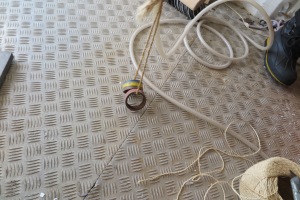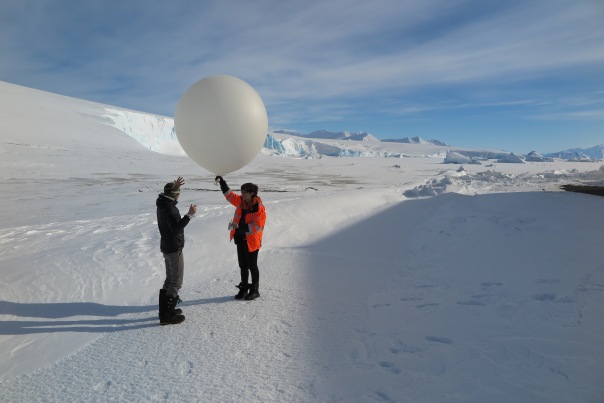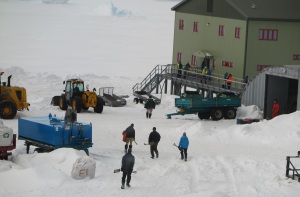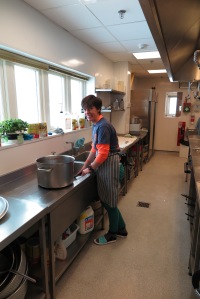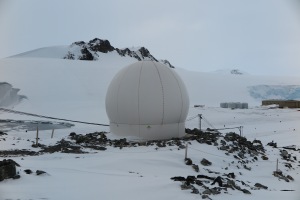Rothera station is located on rocky point on the west shore of Adelaide Island. Walking around the point is a very popular way to take a break from the fish bowl life of base. I try to walk around every day.
The point is crammed with curious science and communication instruments. I have been trying to find out what the various instruments and antennae on the point do. Until today that has been achieved by me asking people who I think might know a.bout them.
Today though I found a fabulous little booklet called “Science Around the Point” that
gives a fabulous little summary of the science projects located on the Point.
Bingo, I now take this booklet along with me on my walks.
Today I stopped and looked at the second satellite dish dome that sits behind the VSAT
dome.

Turns out this is the ARIES (Antarctic Reception of Images for Environmental Science) dome. This dish establishes connections to various polar orbiting meteorological imaging
satellites when they are within range. The satellites take high resolution images of the
region and the satellite dish here is able to receive copies of the images which are used
for weather forecasting and climate research.
The pilots and field operations teams are always eager to receive the latest images to get
an insight in the weather conditions at deep field sites they are awaiting a weather
window to visit.





